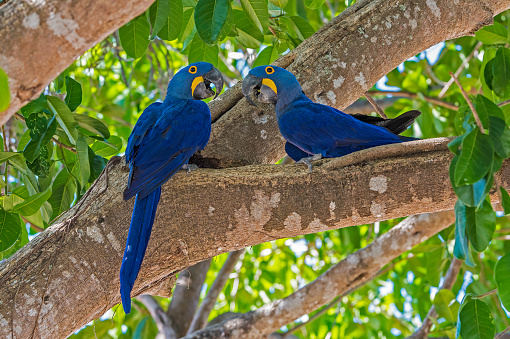Personality & Bird specie information
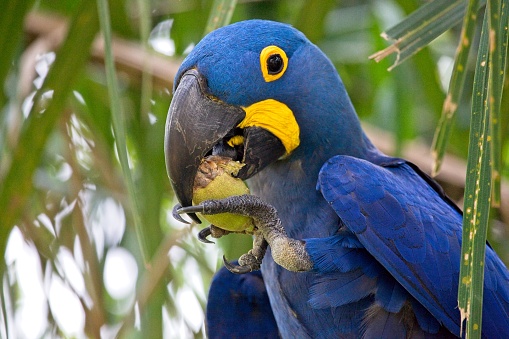
Largest Parrot Breed in the world Introduction (Blue Hyacinth Macaw)
The hyacinth parrot is that the largest parrot within the world. A mature individual could live the maximum amount as 1m (3.3ft) long. Their weight is between one.55 and 1.6kg (3-3.5lbs). Their wingspread is between 117 and 127cm (46-50in). Their body is roofed with deep blue feathers. whereas the feather seems blue if crushed it’s black. this can be thanks to the method light-weight interacts with the feather and produces the looks that it’s blue. round the eye and at the bottom of the beak may be a patch of vacant skin that’s colored yellow. This distinguishes them from alternative parrot species that have an oversized vacant patch round the eye.
The large beak is colored black and flexuous. it’s sturdy enough to crack open a coconut. Both the male and feminine square measure similar within the look. The foot of a hyacinth parrot is zygodactyls. this suggests that every foot has a pair of claws facing forward and a couple of facing backwards. Their foot form is associate adaptation permitting them to grab branches easier.
Health & Common Situation
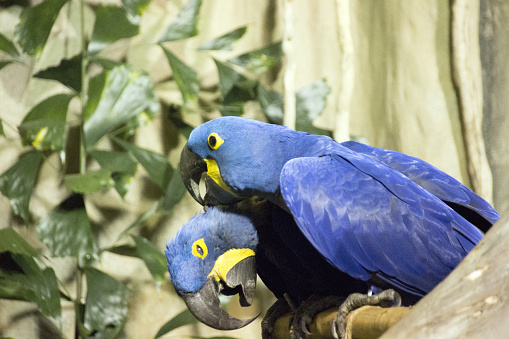
Blue Hyacinth Macaw Proper Care & Common conditions
Hyacinth macaws nest between Gregorian calendar month and Dec. they’re a monogenic species and a combine can pay their entire lives along. A nest is made during a tree cavity or drop-off. Their tree hollows usually sit between four and 14m (13-46ft) off the bottom. In to the nest a feminine lays 2 eggs though’ it’s uncommon for each to achieve fledging. These eggs area unit incubated for between twenty five and twenty eight days. the feminine is primarily chargeable for incubation with the male providing her with food They face a variety of predators together with coatis, skunks and birds. a serious predator of eggs is that the pisiform bird. Toucans area unit one in all the most seed dispersers for his or her favored nesting tree though’. After hatching the chicks area unit fed with regurgitated food. It takes them thirteen weeks to fledge though’ they continue to be with the fogeys for one.5 years. Hyacinth macaws take between a two and four years to achieve sexual maturity.
Care & Feeding
Hyacinth macaws Proper care and feeding
A cockatiel wants a cage spacious enough to accommodate multiple perches, toys, food bowls and have lots of space to flap its wings while not touching them against something. A cage with an outsized door front is right as a result of it makes it easier to come a cockatiel to its cage, particularly since cockatiels will be flighty birds. Cockatiels square measure natural ground foragers and can forage on very cheap of the cage if given the opportunity; cowl the cage floor with newspaper and sprinkle broken treats or millet sprinkle seed for your cockatiel to search out. Cockatiels square measure social birds and thrive once given opportunities to move with you, whether or not it’s gently stimulation their cheek feathers, being talked to or just being within the same space as you. A healthy cockatiel diet includes commercially balanced diets, like Lafeber Premium Daily Diet Pellets, moreover as alternative food, recent vegetables and a few seed. A well-cared-for cockatiel will live for over twenty years.
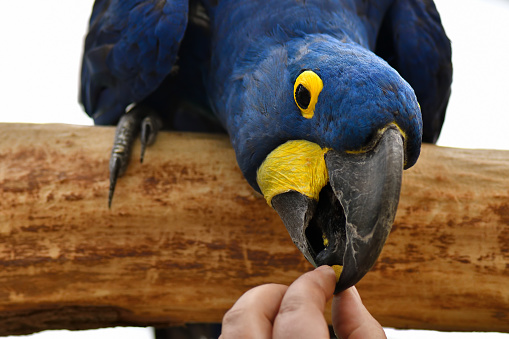
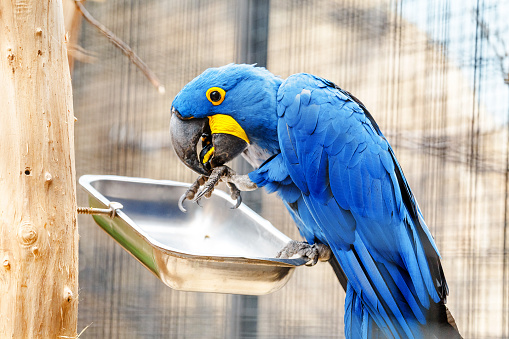
Hyacinth macaws Proper feeding schedule
Proper feeding schedule
Develop a feeding schedule. once you’re coaching your hyacinth parrot, It’s useful to own a daily feeding schedule. Being slightly hungry can support your bird’s interest within the coaching activities. If you’re out there to feed your bird three meals per day, have interaction in coaching sessions simply before every meal. If your schedule doesn’t allow lunch period feedings, then a pair of meals per day can serve. Snacks also will delight your bird, and it’s an excellent time to urge your bird accustomed feeding from your hand. offer her special treats of crackers, carrots, or items of coconut from your vacant hands. Snacking is additionally a decent thanks to bond along with your bird, and might be incorporated into coaching exercises. If your bird is fearful or cautious around you, providing snacks could be a great way to encourage and develop trust.
